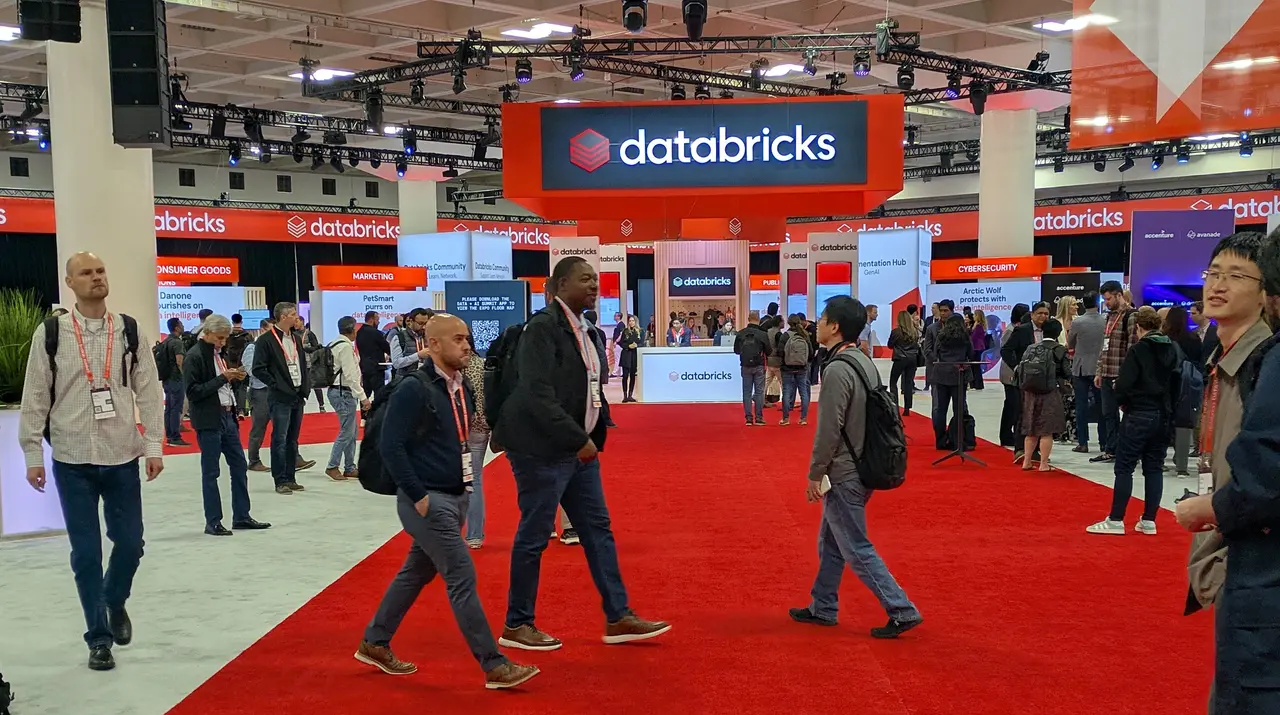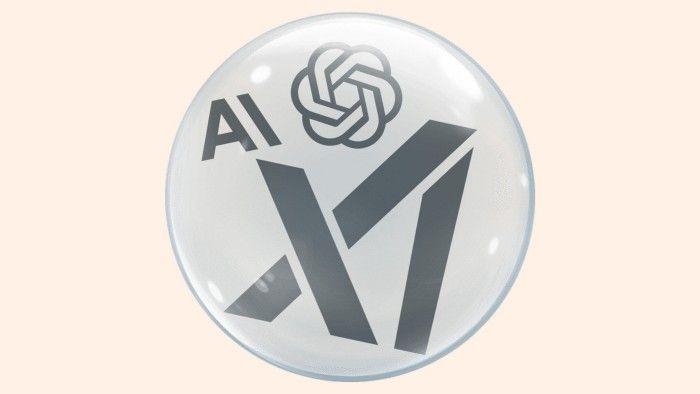Goldman Sachs Identifies Key Indicator for AI Trade Durability and Market Rally
2 Sources
2 Sources
[1]
Goldman Sachs says this is 'a key indicator for the durability of the AI trade' By Investing.com
Goldman Sachs analysts have identified a key measure for assessing the longevity of the AI trade: sales revisions. According to a Wednesday report, while the AI sector has experienced significant growth, particularly in the infrastructure phase, skepticism remains about its long-term profitability. The report outlines four phases of the AI trade, with Phase 2, which includes companies involved in AI infrastructure such as semiconductor firms and cloud providers, showing the most robust performance. "The average stock involved in the infrastructure build-out of AI (Phase 2) has returned 26% YTD," the analysts noted. This phase has outperformed significantly, driven by the considerable capital expenditures from hyperscalers. However, Goldman highlights that the AI trade is under growing scrutiny. "Investors are increasingly concerned about the potential returns to the hyperscalers' AI investment spending," they wrote. While spending on AI infrastructure continues, there has been a noticeable lag in revenue growth projections for these investments. The focus now shifts to the sales revisions of companies involved in later phases of AI adoption. Phase 3 companies, which are expected to monetize AI through software and IT services, have seen volatile performance. "Stocks with enabled revenues (Phase 3) fell by 19% between February and May," analysts highlighted, a decline that reflects investor uncertainty about the timeline and magnitude of returns from AI investments. The durability of the AI trade hinges on the alignment of sales and earnings growth with the significant investments being made. Historical precedents from the Tech Bubble era illustrate the risks of overinvestment without corresponding revenue growth. "Sales revisions will be a key indicator for investors to assess the durability of the AI trade," the analysts emphasized. As the second-quarter earnings season approaches, it will serve as a critical test for investor optimism built into current valuations. Companies involved in AI must demonstrate that their investments are translating into tangible sales and earnings growth to sustain their valuations. The report adds that early signs of failure in generating expected revenues could lead to a de-rating of these stocks. Moreover, Goldman Sachs pointed out that "the AI capex cycle still pales in comparison to the Tech Bubble." At the height of the Tech Bubble, TMT stocks were spending more than 100% of cash flows from operations on capex and R&D. In contrast, today's leading TMT stocks, although seeing increased capex and R&D as a share of sales, have more contained spending at 72% of cash flows. Investors are advised to closely monitor upcoming earnings reports and sales projections to gauge the long-term viability of AI-driven growth. "The necessary earnings growth for today's hyperscalers to maintain their recent average 'ROI' is in line with current consensus earnings growth," the analysts noted, adding that a broad economic slowdown could also challenge the hyperscalers' return on investment (ROI).
[2]
Goldman's $2.8 trillion asset management arm says the S&P 500 will be 'flattish' for the rest of 2024. 5 places it says to invest your money instead.
One reason is that the market's gains have been disproportionately concentrated. The S&P 500 is up 18% this year, but six stocks -- Nvidia (NVDA), Microsoft (MSFT), Apple (AAPL), Amazon (AMZN), Meta (META), and Alphabet (GOOG) -- are responsible for almost two-thirds of the index's total return, indicating that market gains have been driven by a select few mega-caps riding the AI wave. Deladerrière also predicts that the monster earnings growth of the first half of 2024 will decelerate in the next six months. But this doesn't mean that Goldman Sachs is expecting a severe downturn. "It's absolutely a soft landing," Lindsay Rosner, global head of multi-asset fixed income, said. "We are seeing pretty close to trend growth." Rosner expects GDP to grow by up to 2% in the next six months. However, the exact path to recovery is still opaque. More economic data on inflation and the job market is needed, and the looming US election is injecting further uncertainty into the economy. Recent elections in Mexico, the UK, and France have rippled across markets. The bank also sees the ongoing conflicts in the Middle East and Ukraine as significant risks. All of these uncertainties mean that investors need to be proactive about their portfolios. Active management is more important now than ever, and Goldman Sachs recommends taking steps now to prepare for a lukewarm second half of 2024. With analysts predicting the first Fed rate cut in September of this year, Goldman Sachs recommends that investors increase their allocations to fixed income. "As soon as the Fed starts cutting," Rosner said, "that rate that you have been receiving in your cash surrogate, your money market fund, your T bill -- and $6 trillion is sitting there earning that -- that's going to evaporate." Investors should prepare for a steepening of the yield curve in the next few months and quarters and adjust their portfolios accordingly, the bank said. It recommends considering yielding securities such as investment grade or even high-yield bond funds in industrials and energy. Defensive investments, such as government bonds and safe-haven currencies like the US dollar, can provide insurance in an uncertain economic backdrop. The bank also sees an opportunity in small-cap stocks, which can add diversity to megacap-heavy portfolios. Deladerrière expects the market to broaden in the second half of 2024, creating an environment for small-caps to rebound after the last few years of underperformance. Historically, US small-caps have performed well in election years. Additionally, fixed income isn't the only investment that will be impacted by Fed rate cuts. Small-cap companies typically carry more debt on their balance sheets than their larger counterparts, so a rate cut would provide a bigger boost by reducing interest expenses. To address geopolitical instability and financial shocks, Goldman Sachs recommends hedging risk through commodities. Oil is a useful hedge against geopolitical supply chain disruptions and has been popular this year, the bank said. Investors are also turning toward gold, a tried-and-true store of value. The metal has been in high demand this year, with its price hitting a record in May. The bank also points out a few areas of the economy that it believes to be well-positioned for growth -- and it's not just AI-related areas that have been getting all the buzz so far. Although AI is still an important trend, Deladerrière said the bank's view is that it's "a little hyped." He points to issues such as climate change and an aging global population, which he believes will spur the clean energy and healthcare sectors. Typically, the best companies in these sectors are based in the US. "The US has a more resilient macro, more innovation, more resources, and companies that tend to have higher margins, higher returns, lower debt," remarked Deladerrière. But that doesn't mean investors should rule out international equities. Goldman Sachs is seeing increasing opportunities in Asia. Japan is one example. Corporate governance reforms in recent years have made the country's markets a more attractive place to invest as companies improve the quality of their earnings. Japan is well exposed to AI, clean energy, and healthcare trends. The bank also highlights opportunities in India. Deladerrière sees massive potential for the technology sector in the country: "It has some of the world's most advanced tech companies. For example, it has fully digitized its identity system already." Overall, the bank believes being proactive and creating diversified portfolios is key in uncertain environments. By investing in a variety of asset classes with different return drivers, investors can protect themselves against economic shocks as well as unlock new opportunities for gains, it said "Don't put all of your eggs in the same basket," Deladerrière said. "What has worked in the past six months or 18 months may not be what works in the next 18 months."
Share
Share
Copy Link
Goldman Sachs analysts highlight the importance of earnings revisions in determining the sustainability of the AI-driven market rally. They also provide insights on where to invest in the current market landscape.

Goldman Sachs Emphasizes Earnings Revisions as Crucial Indicator
In a recent analysis, Goldman Sachs has identified earnings revisions as a critical factor in assessing the longevity of the artificial intelligence (AI) trade and the broader market rally. The investment bank's strategists, led by David Kostin, argue that the sustainability of the current market uptrend hinges significantly on the trajectory of earnings estimates
1
.The Importance of Earnings Revisions
According to Goldman Sachs, positive earnings revisions are essential for maintaining the momentum of AI-related stocks and the broader market. The bank's analysts note that historically, when earnings estimates rise, it often correlates with continued stock price appreciation. Conversely, downward revisions in earnings forecasts can signal potential market weakness
1
.AI's Impact on the Market
The recent market rally has been largely driven by enthusiasm surrounding AI technologies. Companies at the forefront of AI development and implementation have seen significant stock price increases. However, Goldman Sachs cautions that the sustainability of this trend will depend on whether these companies can deliver earnings growth that justifies their current valuations
2
.Investment Recommendations
In light of these observations, Goldman Sachs has provided several investment recommendations:
-
Focus on Quality: The bank suggests investors prioritize companies with strong balance sheets and consistent profitability
2
. -
Consider Cyclical Sectors: As the economy shows signs of resilience, cyclical sectors may offer attractive opportunities
2
. -
Look Beyond the Magnificent Seven: While tech giants have led the rally, Goldman Sachs suggests exploring opportunities in other sectors and mid-cap stocks
2
.
Related Stories
Market Outlook and S&P 500 Projections
Goldman Sachs maintains a positive outlook for the S&P 500, projecting it to reach 4,500 by year-end. This forecast is based on expectations of continued economic growth and the potential for further earnings surprises in AI-related companies
1
.Potential Risks and Challenges
Despite the optimistic outlook, Goldman Sachs acknowledges several potential risks:
-
Valuation Concerns: Some analysts worry that AI-related stocks may be overvalued, potentially leading to a market correction
1
. -
Economic Uncertainties: Factors such as inflation, interest rates, and geopolitical tensions could impact market performance
2
. -
Earnings Disappointments: If companies fail to meet the high earnings expectations, it could lead to negative revisions and potential market volatility
1
.
References
Summarized by
Navi
[1]
Related Stories
Recent Highlights
1
AI Chatbots Sway Voters More Effectively Than Traditional Political Ads, New Studies Reveal
Science and Research

2
DeepSeek releases open-source AI models that rival GPT-5 and Gemini at fraction of the cost
Technology

3
Databricks Seeks $5 Billion Funding Round at $134 Billion Valuation Amid AI Boom
Business and Economy








